For over two-and-a-half years, the United States has supported Saudi Arabia in a war against the Houthi movement in Yemen. The war has created the worst humanitarian catastrophe in the world and threatens to turn into the largest famine in decades.
Yet very few Americans know who the Houthis are, what they stand for, and why they are our de facto enemies. Two administrations have backed the war against the Houthis without a serious campaign to explain why Americans should see them as our enemies.
Yemeni politics are incredibly complex and volatile—rather than get drawn into a quagmire against an enemy they hardly know, the United States and its partners should get serious about finding a political solution.
What you need to know
First and foremost, the Houthis are Zaydi Shiites, or Zaydiyyah. Shiite Muslims are the minority community in the Islamic world and Zaydis are a minority of Shiites, significantly different in doctrine and beliefs from the Shiites who dominate in Iran, Iraq, and elsewhere (often called Twelvers for their belief in twelve Imams).
The Zadiyyah take their name from Zayd bin Ali, the great grandson of Ali, Muhammad’s cousin and son-in-law, whom all Shiites revere. Zayd bin Ali led an uprising against the Umayyad Empire in 740, the first dynastic empire in Islamic history, which ruled from Damascus. Zayd was martyred in his revolt, and his head is believed to be buried in a shrine to him in Kerak, Jordan. Zaydis believe he was a model of a pure caliph who should have ruled instead of the Umayyads.
The Houthis have made fighting corruption the centerpiece of their political program, at least nominally.
The distinguishing feature of Zayd’s remembered biography is that he fought against a corrupt regime. Sunnis and Shiites agree that he was a righteous man. The Zaydi elevate him to be the epitome of a symbol of fighting corruption. The Houthis have made fighting corruption the centerpiece of their political program, at least nominally. The Zaydi do not believe in ayatollahs like the Twelver Shiites—who are the Shiite sect in Iran and most of the Muslim world—nor do they practice the other Twelver doctrine of taqqiyah (dissimulation), which permits one to disguise his or her faith for self-protection.
In short, they are a very different sect than the Iranian version of Shiism that Americans have come to know since the 1979 Iranian revolution.
Followers of Zayd established themselves in north Yemen’s rugged mountains in the ninth century. For the next thousand years, the Zaydis fought for control of Yemen with various degrees of success. A succession of Zaydi Imams ruled the community and Zaydis were the majority of the population in the mountains of the north. They fought against both the Ottomans and the Wahhabis in the 18th and 19th centuries.
With the collapse of the Ottoman Empire in 1918, a Zaydi monarchy took power in North Yemen called the Mutawakkilite Kingdom. The ruler, or imam, was both a secular ruler and a spiritual leader. Their kingdom fought and lost a border war with Saudi Arabia in the 1930s, losing territory to the Saudi state. They also enjoyed international recognition as the legitimate government of North Yemen. Their capital was in Taiz.

In 1962, an Egyptian-backed revolutionary military cabal overthrew the Mutawakkilite king and established an Arab nationalist government with its capital in Sanaa. With Soviet assistance, Egypt sent tens of thousands of troops to back the republican coup. The Zaydi Royalists fled to the mountains along the Saudi border to fight a civil war for control of the country. Saudi Arabia supported the royalists against Egypt. Israel also clandestinely backed the Zaydi Royalists. The war ended in a republican victory after the Saudis and Egyptians resolved their regional rivalry after the 1967 war with Israel and lost interest in the Yemen civil war.
A Zaydi republican general named Ali Abdullah Saleh came to power after a succession of coups in 1978. Saleh ruled—or misruled—Yemen for the next 33 years. He united north and south Yemen in 1990, tilted toward Iraq during the 1991 Kuwait war, and survived a Saudi-backed southern civil war in 1994. He had complicated relations with both Riyadh and Washington, but by the late 1990s was generally aligned with both against al-Qaida. The al-Qaida attack on the USS Cole in late 2000 in Aden drew the Americans closer to Saleh, although his cooperation against al-Qaida was always incomplete.
The Houthis emerged as a Zaydi resistance to Saleh and his corruption in the 1990s led by a charismatic leader named Hussein al Houthi, from whom they are named. They charged Saleh with massive corruption to steal the wealth of the Arab world’s poorest country for his own family, much like other Arab dictators in Tunisia, Egypt, and Syria. They also criticized Saudi and American backing for the dictator.
2003: The tipping point
The American invasion of Iraq in 2003 deeply radicalized the Houthi movement, like it did many other Arabs. It was a pivotal moment. The Houthis adopted the slogan: “God is great, death to the U.S., death to Israel, curse the Jews, and victory for Islam,” in the wake of the U.S.-led invasion of Iraq. The group also officially called itself Ansar Allah, or supporters of God. It was a turning point largely unrecognized outside Yemen, another unanticipated consequence of George Bush’s Iraq adventures.
Hezbollah, the Shiite movement in Lebanon which successfully expelled the Israeli army from the country, became a role model and mentor for the Houthis. Although different kinds of Shiites, the two groups have a natural attraction. Hezbollah provided inspiration and expertise for the Houthis. Iran was a secondary source of support, especially since the Houthis and Iranians share a common enemy in Saudi Arabia.
After 2003, Saleh launched a series of military campaigns to destroy the Houthis. In 2004, Saleh’s forces killed Hussein al Houthi. The Yemeni army and air force was used to suppress the rebellion in the far north of Yemen, especially in Saada province. The Saudis joined with Saleh in these campaigns. The Houthis won against both Saleh and the Saudi army, besting them both again and again. For the Saudis, who have spent tens of billions of dollars on their military, it was deeply humiliating.
The Houthis won against both Saleh and the Saudi army, besting them both again and again.
The Arab Spring came to Yemen in 2011. The Houthi movement was one part of the wide national uprising against Saleh. It was primarily concerned with advancing the narrow interests of the Zaydi community, not surprisingly. When Saleh was replaced by a Sunni from the south—Abdrabbuh Mansour Hadi, who had been Saleh’s vice president at the behest of the Saudis—the Houthi response was predictable. They were critical of the process and of Hadi.
A national dialogue was instituted to address the future of Yemen after Saleh, with regional and international assistance. It proposed a federal solution with six provinces with some autonomy. The Zaydi-dominated north got two landlocked entities, which the Houthis argued was gerrymandered against them.
In 2014, they began colluding with Saleh against Hadi secretly. Even by the standards of Middle East politics, it was a remarkable and hypocritical reversal of alliances by both the Houthis and Saleh. Much of the army remained loyal to Saleh and his family, so together with the Houthis the two had a preponderance of force in the country. Hadi was deeply unpopular and seen as a Saudi stooge.
The war
After months of gradually moving into the capital Sanaa, it fell to the rebel alliance in January 2015, just as King Salman ascended to the throne in Riyadh. The Houthis opened direct civilian air traffic between Sanaa and Tehran, Iran promised cheap oil for Yemen, and rumors of more Iran-Houthi cooperation spread quickly. The main port at Hodeidah fell to the Houthi forces and they began marching to take Aden, the capital of the south and the largest port on the Indian Ocean.
For the Saudi king and his 29-year-old defense minister and son Prince Muhammad bin Salman (MBS), it was a nightmare. A traditional enemy with ties to their regional foe was taking over the country on their southern belly. The strategic straits at the Bab al Mandab could be in the Houthis’ hands. It was a very difficult challenge for an untried team in the royal palace.
For the Obama administration, the picture was more complicated. American intelligence officials said that Iran was actually trying to discourage the Houthis from seizing Sanaa and openly toppling Hadi. Iran preferred a less radical course, but the Houthi leadership was drunk with success. Moreover, Undersecretary of Defense Michael Vickers said on the record in January that Washington had a productive informal intelligence relationship with the Houthis against al-Qaida. He suggested that the cooperation could continue.
The Saudis chose to go to war to support Hadi and prevent the Houthi-Saleh rebellion from consolidating control of the country. Operation Decisive Storm began in March 2015, MBS taking the public lead in promising early victory for the Saudis. They forged a coalition to back them including the United Arab Emirates, Bahrain, and other traditional Saudi allies. Two refused to join: Oman, Yemen’s neighbor, and Pakistan, whose parliament voted unanimously against the war.
Obama backed the Saudi war. In the choice between the Saudi ally and the Houthis, the president—not surprisingly—took the side of a 70-year old alliance. U.S. and U.K. support is essential to the Royal Saudi Air Force (RSAF), which is equipped with American and British aircraft. The RSAF has dropped tons of American and British munitions on Yemen since.

Almost three years later, the Saudi air and naval blockade of Houthi-controlled territory has created a humanitarian disaster, with millions of Yemenis at dire risk of starvation and disease. The Saudi-led coalition has tightened the blockade and gradually gained more territory, although Hadi has little if any control over the territory recovered from the rebels. He resides in Riyadh. All sides are credibly accused of war crimes.
Saleh broke with his putative ally this month, signaled to Riyadh that he was flipping sides again, and was killed days later. The Houthis won the battle for Sanaa but are isolated from the rest of Yemeni politics and political parties. Riyadh portrays them as Iranian puppets, but many Yemenis see them as patriots fighting the country’s traditional enemy Saudi Arabia and America, Israel’s defender. Houthi propaganda plays to the line that Yemen is under attack by a Saudi-American-Israeli conspiracy.
A major consequence of the war is to push the Houthis and Iran and Hezbollah closer together. U.S. Ambassador to the U.N. Nikki Haley underscored that point, perhaps unintentionally, when she presented compelling evidence of Iranian support for the Houthis missile attacks on Saudi and Emirati targets last week. With their own cities under constant aerial bombardment, the Houthis are firing missiles at Riyadh and Abu Dhabi, with Tehran’s technological assistance. The war costs Tehran a few million dollars per month, while it costs Riyadh $6 billion per month.
Tehran and the Houthis are playing with fire, of course. If a missile hits Riyadh, Jeddah, or Abu Dhabi and kills dozens or more, the pressure for retaliation against Iran will be significant. The Trump administration is poorly designed to provide cooling counsel.
This brief and simplified account of the background of the Houthis should underscore how complex Yemeni politics are and how volatile they can be. Saleh called running Yemen to be akin to dancing on the heads of snakes. It is a foolish place for Americans to be drawn into a war and a quagmire against an enemy they hardly know. The administration has recently called for an easing of the blockade. It’s time to get serious about a political solution, not to wade deeper into quicksand.
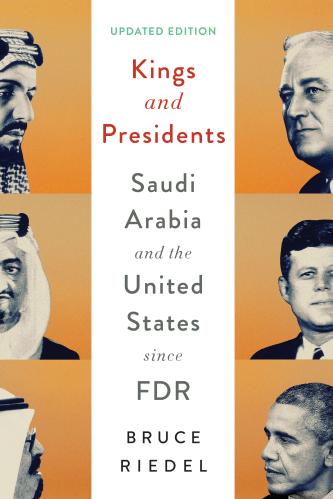
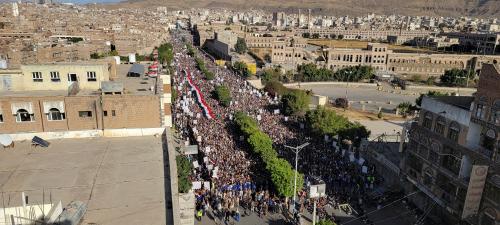
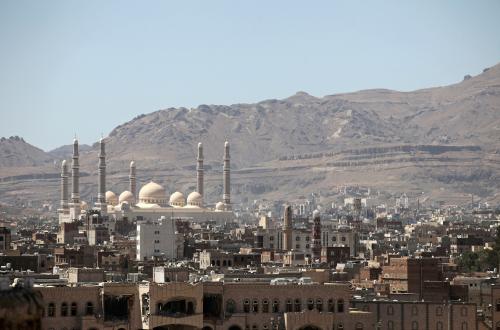
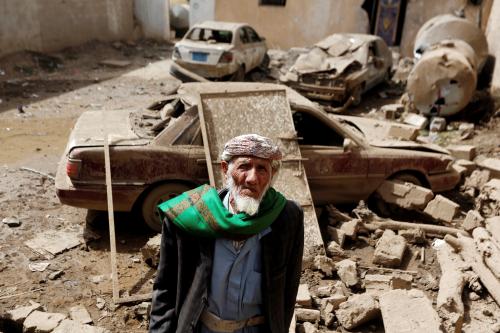
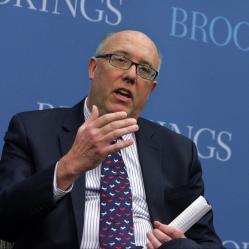
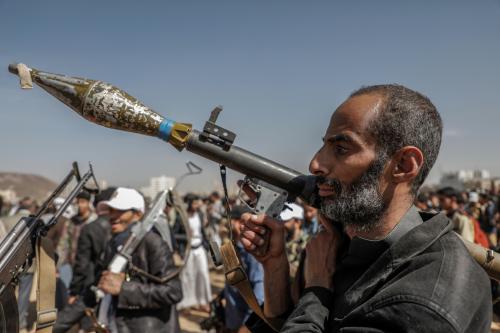
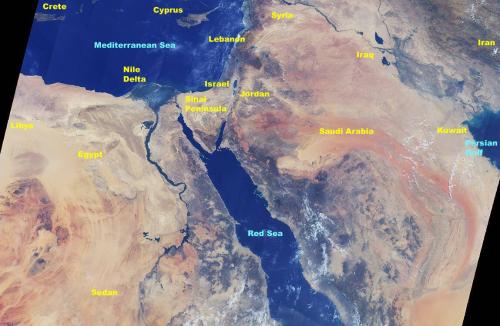

Commentary
Who are the Houthis, and why are we at war with them?
December 18, 2017